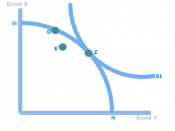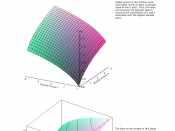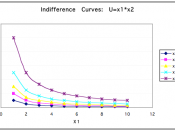Mathematical Approaches to Microeconomics: A Handbook.
Introduction.
Economics is not a clearly defined discipline. Its frontiers are subject to constant change, and their definitions frequently give rise to controversy. A commonly used definition characterises economics as the study of the use of limited means for the achievement of alternative ends. More specifically, economics may be defined as a social science which covers the actions of individuals and groups of individuals in the process of producing, exchanging and consuming goods and services.
Like most other disciplines, economics is divided into branches and sub-branches. The major branches are microeconomics, which is the study of the economic actions of individuals and well-defined groups of individuals, and macroeconomics, which is the study of broad aggregates such as total employment and national income. This paper will deal entirely with the former branch.
To continue with the theme of the frontiers of economics being blurred, it may be added that mathematics is gradually achieving importance in economics.
Mathematics, when applied to economics, is not an end in itself, but rather a set of tools which facilitates the derivation and exposition of economic theories. It is a set of tools that is indispensable to the toolkit of anyone studying economics. Economics in the context of a law course is once again not an end in itself, but a means to an end. Therefore this paper hopes to be of some relevance to the study of economics within a law course, and hence, in the long run, to the law course itself.
There are many students who are taking a law course with a knowledge of mathematics that does not stretch beyond the vary basics, maybe even limited only to the mathematics that are required in daily life. Again, there may be other students who have a comprehensive...


